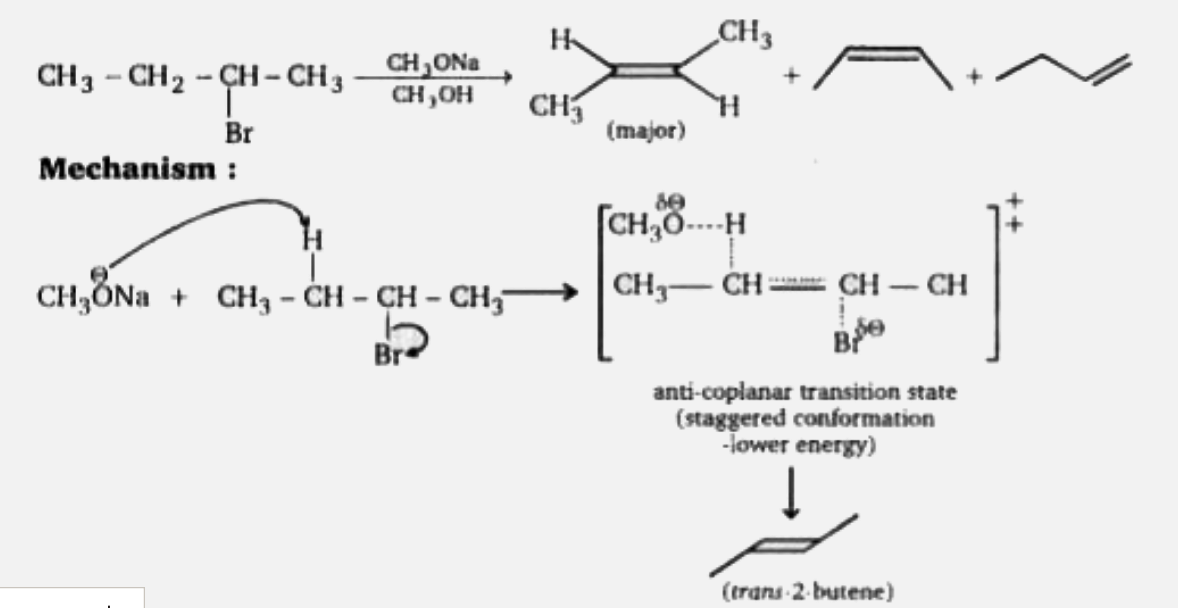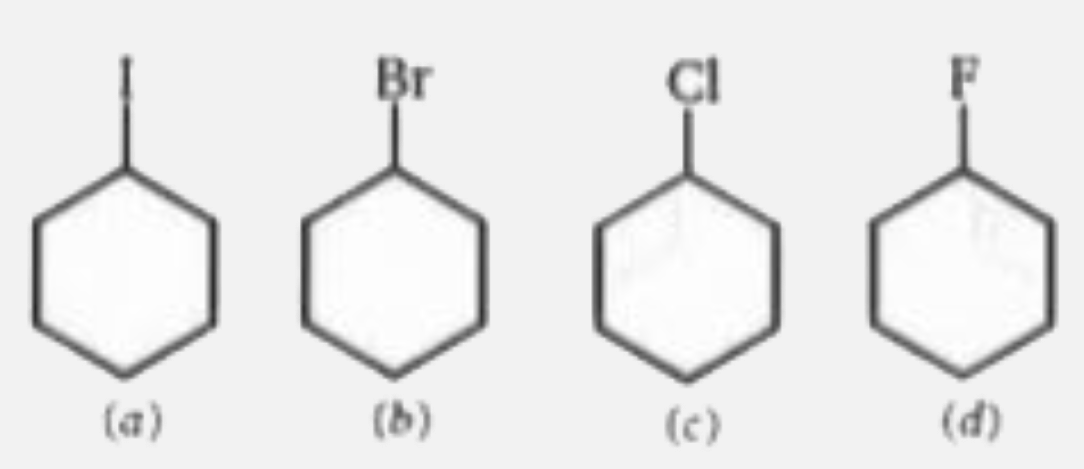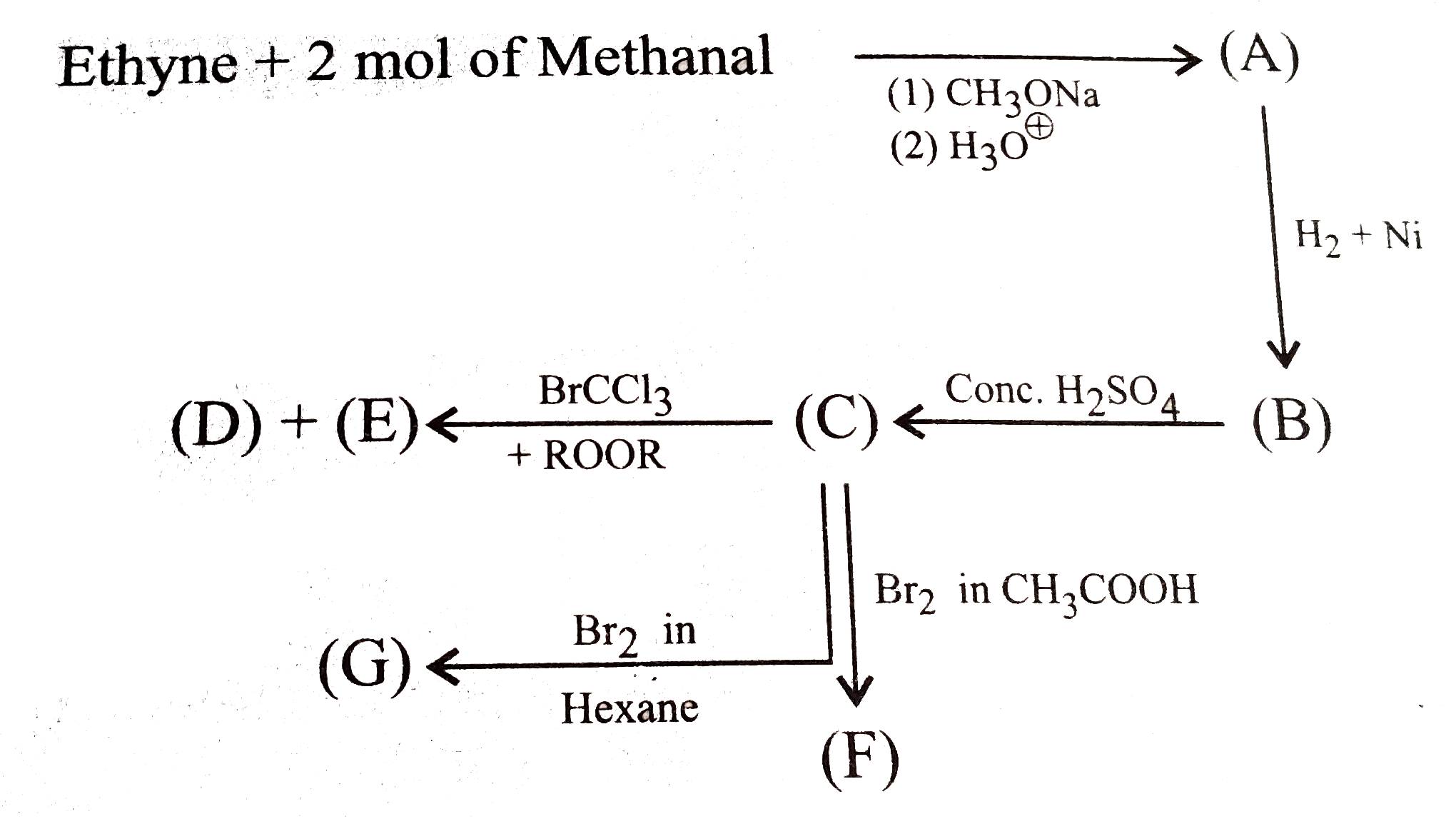
Product (G) is :Solution in Telugu




The correct Answer is:C
Topper's Solved these Questions
- ALDEHYDES AND KETONESBOOK - MS CHOUHANCHAPTER - ALDEHYDES AND KETONESEXERCISE - LEVEL-2
20 Videos
- ALCOHOL,ETHERS AND EPOXIDESBOOK - MS CHOUHANCHAPTER - ALCOHOL,ETHERS AND EPOXIDESEXERCISE - SUBJECTIVE PROBLEMS
1 Video
- ALKYL HALIDES (ELIMINATION REACTION) BOOK - MS CHOUHANCHAPTER - ALKYL HALIDES (ELIMINATION REACTION) EXERCISE - LEVEL-2
25 Videos
Similar Questions
Select the best choice for example (A to L) from the examples (a to n) given below. Write your choice in the box given.


View Solution
Maximum number of moles of Ac2O consumed by reactant (A) is :
View SolutionComprehension
E2 raction → Elimination bimolecular
In the general mechanism of the E2 reaction a strong base abstract a proton on a carbon atom adjacent to the one of the leaving group. As the abstracts a proton , a double bond forms and the leaving group leaves.

Identify the rate ofreaction of given compounds in E2 reaction:

View SolutionFor the reaction H2(g)+I2(g)⇔2HI(g), the equilibrium can be shifted in favour of product by
View SolutionIn the following reaction sequence, products (A) to (G) are formed. Product (A) is:
View SolutionThe structure of product (G) is :
View Solution
Product (G) is :
View SolutionAt a given temperature equilibrium is attained when 50% of each reactant is converted into the products A(g)+B(g)hArrC(g)+D(g) If amount of B(g) is doubled, percentage of B converted into products will be :-
View SolutionIn the reaction N2(g)+O2(g)⇔2NO(g),ΔH=+180.7kJ. On increasing the temperature the production of NO
View Solutionমনে করো, f(x)=2x−3,g(x)=2x+1হলে, (g(f(x)) নির্ণয় করো
View Solutionअभिक्रिया N2(g)+3H2(g)⇔2NH3(g),ΔH=−93.6 kJ में अमोनिया का उत्पादन नहीं बढ़ेगा, जब-
View SolutionIn the following reaction sequence, products (A) to (G) are formed.

Product (A) is:
View SolutionIn the following reaction sequence, products (A) to (G) are formed.

Product (B) is:
View SolutionIn the following reaction sequence, products (A) to (G) are formed. Product (C) is:
View SolutionIn the following reaction sequence, products (A) to (G) are formed.

Product (D) and (E) is:
View SolutionIn the following reaction sequence, products (A) to (G) are formed. Product (F) is:
View Solution
